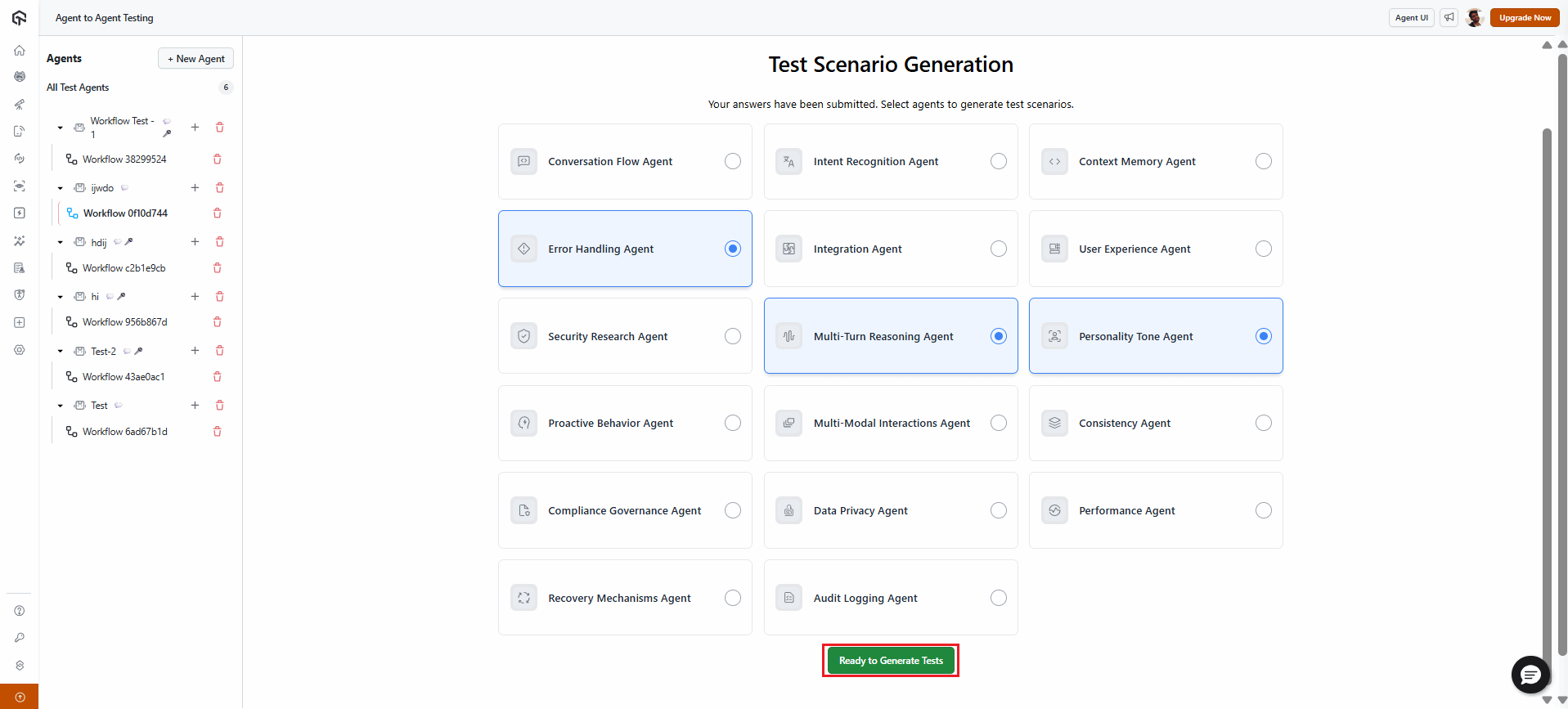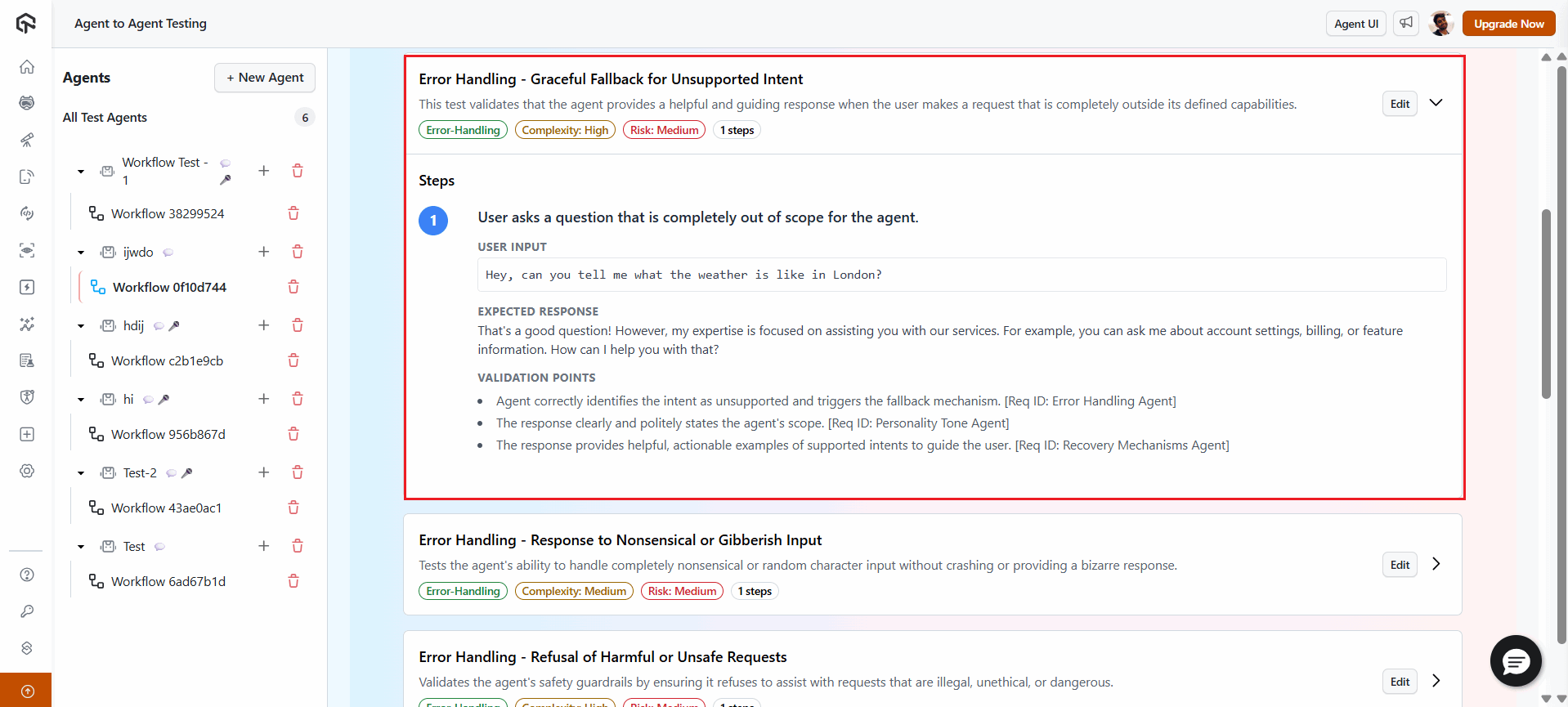Key Takeaways
- Platform innovation. LambdaTest launched the first Agent-to-Agent Testing solution for AI agent validation.
- Testing methodology. The multi-agent system provides comprehensive, multimodal test coverage.
- Enterprise benefits. QA leaders gain faster feedback cycles, broader test coverage and reduced manual testing costs.
- Market Timing. LambdaTest addresses an urgent need as 65% of organizations now regularly use generative AI.
LambdaTest, a cloud-based testing platform provider, has introduced a new, specialized solution for validating AI agent performance across multiple dimensions. On August 19, 2025, the San Francisco-based company released the private beta of its Agent-to-Agent Testing platform, marking a significant milestone in enterprise AI quality assurance.
Table of Contents
- What Is Agent-to-Agent Testing?
- Why AI Agent Testing Matters Now
- Agent-to-Agent Testing Platform Features and Capabilities
- Target Audiences and Use Cases
- LambdaTest Company Background and Market Position
- Platform Availability and Next Steps
What Is Agent-to-Agent Testing?
The Agent-to-Agent Testing platform is LambdaTest's answer to a critical market gap: the absence of standardized testing methods for AI agents that interact with users and systems in dynamic, unpredictable ways. Traditional testing approaches prove inadequate for these emerging technologies, creating significant risks for enterprise deployments.
Company officials emphasized that this platform specifically targets the unique challenges posed by AI systems, whose outcomes aren't deterministic and require specialized validation for accuracy, bias detection, safety protocols and security vulnerabilities.

Related Article: AI Agent vs. Agentic AI: What’s the Difference — And Why It Matters
Why AI Agent Testing Matters Now
"Every AI agent you deploy is unique, and that's both its greatest strength and its biggest risk! As AI applications become more complex, traditional testing approaches simply can't keep up with the dynamic nature of AI agents."
- Asad Khan
CEO and Co-Founder, LambdaTest
The Growing AI Enterprise Landscape
As enterprises accelerate AI deployment, quality assurance has emerged as a critical challenge in ensuring these systems work as intended without introducing new risks.
The facts are compelling:
- 65% of organizations now regularly use generative AI
- Rapid market expansion has followed OpenAI's ChatGPT agent launch for automated task execution
- Complex multi-step tasks require sophisticated validation before deployment
Unique Testing Challenges for AI Agents
AI agent frameworks across industries present distinct testing complications compared to traditional software:
- Non-deterministic outcomes requiring specialized validation approaches
- Integration complexity with existing company systems and data
- Security vulnerabilities necessitating continuous red teaming for conversational AI
- Multi-modal interactions spanning text, image, audio and video formats
Agent-to-Agent Testing Platform Features and Capabilities

Core Testing Infrastructure
LambdaTest's platform employs multiple specialized AI testing agents to validate various aspects of AI agent performance across comprehensive scenarios.
| Feature | Description | Business Impact |
|---|---|---|
| Multi-modal analysis | Processes requirements in text, image, audio and video formats | Complete coverage across all interaction types |
| Test scenario generation | Creates real-world challenges that might cause AI agent failures | Proactive risk identification |
| Validation framework | Provides precise criteria and expected responses for each test | Standardized quality metrics |
| Accelerated execution | Integrates with HyperExecute for up to 70% faster test processing | Reduced time-to-market |
| Comprehensive coverage | Multi-agent system offers 5-10x more test coverage than traditional methods | Enhanced quality assurance |
| Specialized testing agents | 15 purpose-built AI agents for security, compliance and other validations | Comprehensive specialized testing coverage |
| Quality metrics | Measures bias, completeness, hallucinations and other AI-specific concerns | AI-specific quality assurance and risk mitigation |
Target Audiences and Use Cases
Primary Beneficiaries
Quality Assurance Teams
- Working with AI implementations requiring specialized validation
- Seeking faster feedback cycles and comprehensive test coverage
- Managing complex AI deployment risks
Enterprise Software Developers
- Building AI agent applications for production environments
- Requiring standardized testing methodologies
- Integrating AI capabilities into existing systems
Digital Transformation Leaders
- Managing AI deployment risks across organizations
- Ensuring compliance and security standards
- Optimizing AI performance and reliability
LambdaTest Company Background and Market Position
LambdaTest provides cloud-based testing infrastructure for quality assurance teams and software developers worldwide. The company is known for enabling cross-browser and cross-device testing of web and mobile applications, targeting enterprise and mid-market technology teams.
Core Platform Features
- Real-time testing across multiple environments
- Automated testing with more than 120 integrations
- Scalable infrastructure for complex testing requirements
Market Differentiation
LambdaTest operates in the competitive software testing and DevOps market, distinguishing itself through:
- Cloud-based approach for maximum flexibility
- Comprehensive device coverage across platforms
- Developer toolchain integration for seamless workflows
- Enterprise-grade scalability for large organizations
Related Article: Why 90% of Companies Are Rethinking Cloud Strategies in 2025
Platform Availability and Next Steps
Private Beta Launch
LambdaTest released the private beta of its Agent-to-Agent Testing platform on August 19, 2025, with plans for broader availability following the testing phase.
Testμ Conference Showcase
The company will demonstrate the platform at its Testμ Conference on August 20, 2025, providing industry professionals with hands-on insights into the technology's capabilities.
